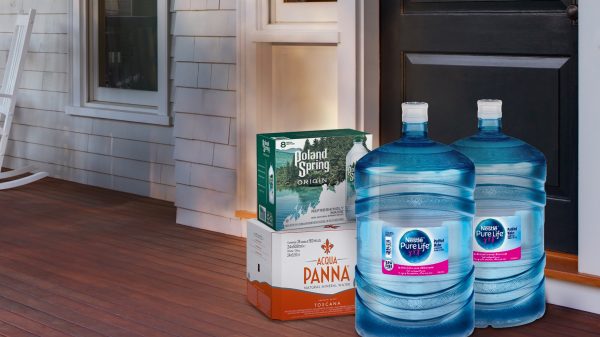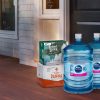High cholesterol levels is considered to be the single most important risk factor of developing atherosclerosis – a health condition in which cholesterol builds up in the arterial walls and forms bulky plaques that hamper the flow of blood until a clot eventually forms that obstructs an artery and leads to either a heart attack or stroke. In fact, experts are of the view that about half of all deaths in the United States are associated with atherosclerosis.
People do not develop high cholesterol levels overnight. High levels of LDL “bad” cholesterol in the bloodstream builds up over time due to two major factors which are an individual’s genetic makeup and his or her lifestyle choices; or a mix of both.
The only way to actually determine one’s cholesterol level is through a measured blood test. However, while some ranges of cholesterol have been considered “too high”, it is incorrect to think of cholesterol level as being strictly abnormal or normal as there is no “magic number” that separates risky levels from safe levels.
To be able to achieve and maintain a healthy cholesterol level and thereby reduce the risk of cardiovascular disease, it is important to find ways to reduce the level of LDL “bad” cholesterol and also ways to increase the level of HDL “good” cholesterol.
Considering that diet and genetic factors are the two main reasons for high cholesterol levels, it would seem logical to make certain diet and lifestyle modifications as the first line of defense against high cholesterol levels. Also, while there may not be too many options available when dealing with inherited genetic factors, healthy dietary habits nonetheless play a significant role in keeping cholesterol levels low. Cholesterol medication only becomes necessary when diet and lifestyle modifications do not bring cholesterol level into a healthy range.
1. Exercising Regularly
Engaging in regular physical exercise helps to lower LDL cholesterol and raise HDL cholesterol. Incorporating high intensity aerobic exercises into your exercise routines can help in achieving quicker weight loss results.
Actually, engaging in an aerobic exercise program could increase HDL “good” cholesterol level by as much as 5% in the first two months. Activities such as walking, swimming, gardening, dancing, taking the stairs instead of the elevator can all play significant roles especially for those who may not like always going to the gym.
2. Quitting Smoking
Apart from the fact that smoking raises the risk of having cardiovascular disease, it also lowers the level of HDL “good” cholesterol by as much as 15 percent. Also, smoking is known to damage the walls of blood vessel thus making them more susceptible to the accumulation of fatty deposits. However it is important to consult with your doctor about what combination of several smoking cessation strategies to make use of.
3. Making Better Dietary Fat Choices
Given the fact that not all fats are bad, opting for the healthy fats with a degree of moderation and balance in their consumption is the key to achieving and maintaining a healthy body weight that helps to lower high cholesterol levels.
While saturated fats from animal products and oils like butter and palm only raise LDL cholesterol levels, trans fats (particularly hydrogenated vegetable oil found in many baked and fried foods) not only increases LDL “bad” cholesterol level but also decreases HDL “good” cholesterol levels.
On the other hand, one of the unsaturated fatty acids, polyunsaturated fats, while reducing LDL cholesterol levels also are known to equally reduce some amount of the protective HDL cholesterol. Good sources of polyunsaturated fat include vegetable oils such as safflower, corn, sunflower, soy, and cottonseed oil.
However, monounsaturated fats, another unsaturated fatty acid from oils such as olive oil, canola oil and nuts in general, while helping to reduce LDL cholesterol does not lower the level of the protective HDL cholesterol.
4. Eating More Fiber
Fiber, especially soluble fiber, found in many foods is extremely effective in reducing LDL “bad” cholesterol. Fiber reduces cholesterol through two mechanisms, the first being the production of “short-chain” fatty acids which inhibit the production of cholesterol.
Second is the fact that fiber reduces the absorption of dietary cholesterol by combining with bile acids and reducing their availability for the breakdown of fats. This forces the liver to remove additional cholesterol from the bloodstream through its LDL receptors and uses the extracted cholesterol to manufacture new bile acids, an action which effectively reduces LDL cholesterol levels.
Good sources of soluble fiber include psyllium husks, apples, beans, peas, citrus fruits, barley, oats (which contains beta glucan – a type of soluble fiber), and carrots. Ensure a daily intake of about 20-30g of soluble fiber.
5. Reducing Carbohydrate Intake
While you need carbohydrates for energy, however increased intake of high glycemic index foods causes an increase in blood glucose levels which often results in the excess being converted into triglycerides. It is important to realize at this point that most of the triglycerides synthesized in the liver and released into the bloodstream are transported as very low-density lipoproteins (VLDLs) which eventually turn into low-density lipoproteins (LDL) – the “bad” cholesterol.
Although carbohydrates such as whole grains, whole wheat pasta, and brown rice have some amount of fiber and do not raise blood glucose levels much, others like white pastries, white rice, and white potatoes which have high glycemic indexes increase blood glucose level very rapidly.
6. Reducing Stress Levels
For certain individuals, research has shown that high stress levels can directly increase their cholesterol levels. Although the stress hormone cortisol helps in the regulation of fat, carbohydrate, and protein metabolism, over-secretion of this hormone when an individual is stressed can significantly lower his or her metabolism causing an increase in triglycerides which in turn elevates the levels of LDL cholesterol.
It is equally known that fat cells around the stomach love to attract cortisol and this often results in fat storage around the abdominal area, a situation which is linked with hardening of the arteries. Stress levels can be effectively reduced through regular physical exercise, doing deep-breathing, and engaging in meditation and other relaxation techniques.
7. Using Cholesterol Medications
When genetic factors are the main causes of high cholesterol levels, lifestyle modifications alone may not suffice to get your cholesterol level to a reasonable safe range. Luckily, there are medications like Statins (HMG CoA reductase inhibitors) which inhibit the actual manufacture of cholesterol instead of just preventing the re-absorption of cholesterol from the intestine.
Bile acid resins, nicotinic acid (niacin), fibric acid derivatives (fibrates), and cholesterol absorption inhibitors are other available cholesterol medications. Some of these medications can be combined to increase their effectiveness in reducing LDL “bad” cholesterol and also simultaneously increase HDL “good” cholesterol levels. However, it is highly recommended to consult with your doctor before attempting to use any cholesterol medication or combination thereof because of any possible adverse reaction.









